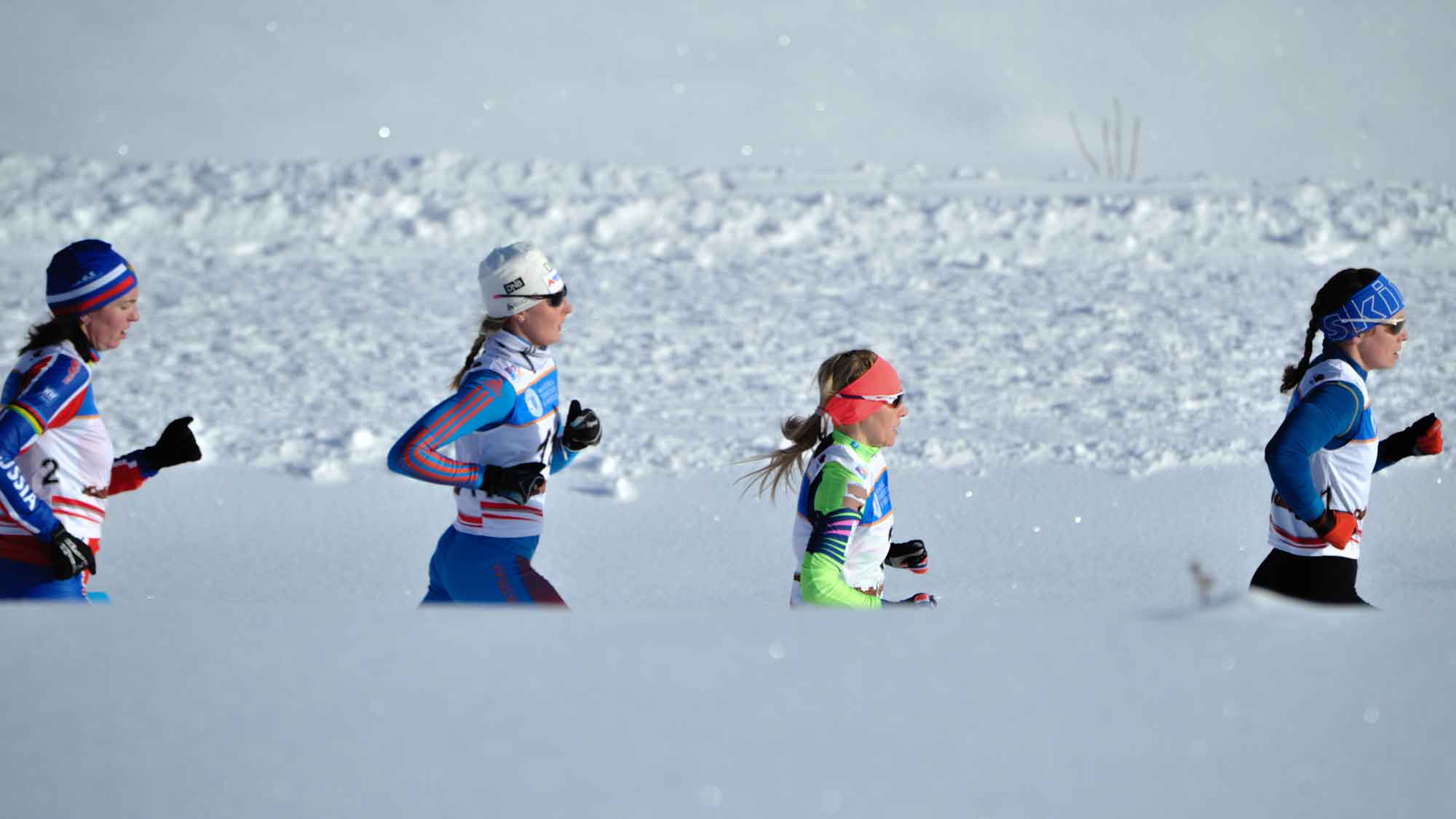If you buy through our links, we may earn an affiliate commission. This supports our mission to get more people active and outside.Learn about Outside Online's affiliate link policy
Winter Tri: An Awesome Off-Season Challenge for Triathletes

Photo: Janos Schmidt/Triathlon.org
Jan Guenther is no stranger to triathlon. The 59-year-old owner of Gear West Ski & Run and Gear West Alpine & Casual in Long Lake, Minnesota, has won her age group at Ironman Wisconsin more times than she can remember (she set the master’s record and won the overall AG crown in 2002, then took the title again in 2009; she also won an Ironman age-group world championship in 2003). So, despite being in the sport at a high level for almost 35 years, how does she stay in shape, stave off injury, and remain involved in tri? She takes to the snow.
“Now I’m mostly into cross-country ski racing, so I liked the idea of winter tri,” says Guenther, who is also a two-time national champ at the snowy version of multisport. Though the actual composition of winter triathlon is often dictated by the race director and snow conditions, the official national championships are comprised of a run (ranging from 5-9K), a mountain bike (ranging from 10-15K, often on a fat-tire bike), and a cross-country ski (either classic or skate-ski, ranging from 8-12K)—all done on snow.
While races in the U.S. are relatively small and few-and-far between, the ITU also hosts a world championship each year, where athletes from Russia, Czech Republic, Italy, and Austria usually dominate. Though the official events may not be as widespread as their swim-bike-run cousins, the benefits behind winter tri training are huge.
“It’s like a little tiny version of tri,” Guenther says. “It’s a perfect way to rest your legs, to keep your cycling up for summer without burning out on the indoor trainer; and if you love the outdoors, it’s another way of staying incredibly fit without beating up your legs.”
As someone who has been at the pointy age- group end of the sport for decades, Guenther looks at winter tri as a way to keep sharp without the constant physical abuse. “It’s what’s helped me throughout all of these years from needing new hips or new knees,” she says. “It’s a complete full-body workout. And it is beautiful. I think that most triathletes who get into it like it.” Even if ever-changing snow conditions might make the cross-country skiing side of the sport slightly unpredictable, Guenther suggests roller skiing as an excellent alternative.
“You should just look at it as something fun and different, like swim-run,” she says. “You should look at it as something with less pressure. You should look at it as a fun event that you can train for without getting too bent out of shape.” For more on how to get started, check out the sidebar below.
Get the Gear
For the run, the experts recommend simple trail shoes; for the bike, a fat-tire bike (using tires run at super low pressures with a width up to 5 inches); for the ski, Guenther recommends:
Salomon Equipe 8 Skate Boot
$150, Backcountry.com
Fischer SCS
$270, Backcountry.com
Fischer Turnamic Race Binding
$70, Backcountry.com
Swix Cross CT4 Pole
$80, Akers-ski.com